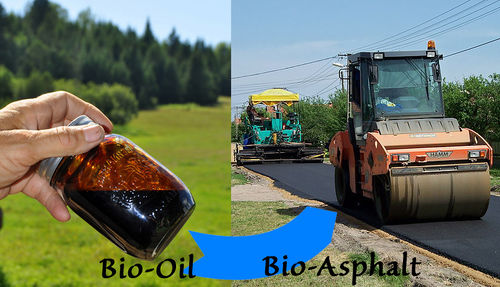Bioasphalt: Difference between revisions
Jump to navigation
Jump to search
(Created page with "File:Bio-Asphalt01.jpg|500px|thumb|right|Bio-Asphalt can be produced through the pyrolysis of biomass. Among the heavy fractions are ones similar to bitumen and suitable for...") |
(inserted categorization) |
||
| Line 13: | Line 13: | ||
* Wageningen UR: [https://www.wageningenur.nl/en/article/Bioasphalt.htm Bioasphalt] | * Wageningen UR: [https://www.wageningenur.nl/en/article/Bioasphalt.htm Bioasphalt] | ||
* Avello Bioenergy (corp.): [http://www.avellobioenergy.com/en/products/bioasphalt_binder/ Bioasphalt binder] | * Avello Bioenergy (corp.): [http://www.avellobioenergy.com/en/products/bioasphalt_binder/ Bioasphalt binder] | ||
[[Category:Energy]] | |||
[[Category:Materials]] | |||
[[Category:Housing and Construction]] | |||
Revision as of 23:44, 21 June 2016
Bioasphalt is derived from biomass (rather than petroleum) via pyrolysis and subsequent processing in a biorefinery. The very heavy and viscous tar-like fractions of Bio-Oil (i.e. "bio-bitumen") may be suitable for road paving and other uses in construction. It is a potentially economical solution to various infrastructure needs. Construction equipment may be the same as for conventional asphalt.
Related pages
- The Biochar Economy: Bioasphalt as a co-product of biochar production
- Eco-Industrial Park: paving roads in the park
Links
- Wikipedia: Bioasphalt
- Iowa State University: “Bioasphalt(R) developed at Iowa State to be used, tested on Des Moines bike trail”
- Wageningen UR: Bioasphalt
- Avello Bioenergy (corp.): Bioasphalt binder
